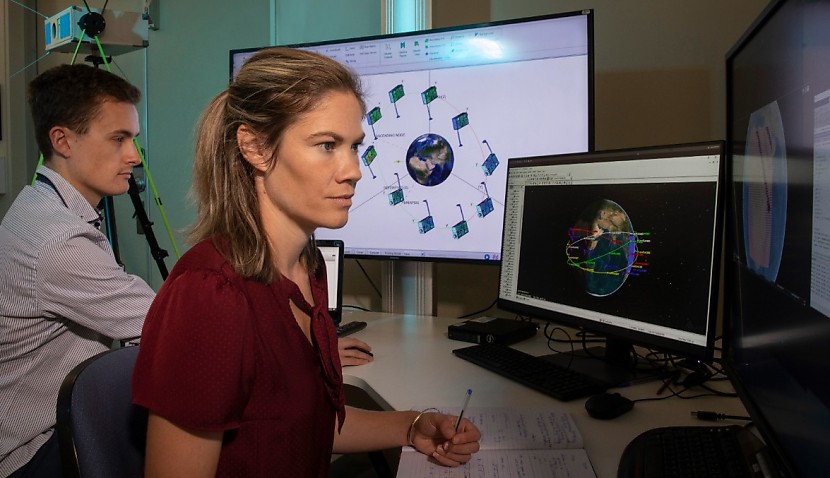
Monique Hollick has been working as a space systems engineer at the Defence Science and Technology Group (DSTG) since 2017 and was offered the opportunity to be seconded in 2019.
However, COVID-19 meant she had to delay the move until last year when her family relocated to the country so she could begin working for the Centre National d’Etudes Spatiales (CNES) in Toulouse.
“Living in France, with a toddler in tow, has been challenging at times, but we have made some invaluable memories that we will cherish for the rest of our lives,” she said.
Hollick’s first job at DSTG was operating Defence’s first satellite in 50 years, the Buccaneer Risk Mitigation Mission.
“More recently, my job has been focused on developing the successor to this satellite, the Buccaneer Main Mission, through managing system budgets, requirements, payload interfaces and ‘assembly, integration and test’ activities,” she said.
At CNES, Hollick is embedded in the Nanolab Academy, a group that develops nanosatellites as a training group and technology testbed for space missions.
“My role in the group is similar to my role in Australia, so my learnings have been very relevant,” she said.
The upcoming Buccaneer Main Mission project is designed to improve the accuracy of a key RAAF radar – the Jindalee Operational Radar Network (JORN) – that monitors the northern and western approaches to Australia.
It consists of two missions jointly developed by UNSW Canberra Space and DSTG.
The first “Risk Mitigation Mission”, launched in 2017, was designed to test the technology. Its sequel, consisting of a single CubeSat manufactured by Adelaide-based Inovor Technologies, will remain in space for 12 months.
The Main Mission will fly through JORN’s pencil beam to ensure it is the correct shape when it hits the ionosphere, a part of Earth’s upper atmosphere that reflects and modifies radio waves used for communication.
It aims to help calibrate the radar and enhance its performance as a long-range threat detector. JORN is also used for civilian purposes, such as detecting illegal entry of people, smuggling, and unlicensed fishing.

Adam Thorn
Adam is a journalist who has worked for more than 40 prestigious media brands in the UK and Australia. Since 2005, his varied career has included stints as a reporter, copy editor, feature writer and editor for publications as diverse as Fleet Street newspaper The Sunday Times, fashion bible Jones, media and marketing website Mumbrella as well as lifestyle magazines such as GQ, Woman’s Weekly, Men’s Health and Loaded. He joined Momentum Media in early 2020 and currently writes for Australian Aviation and World of Aviation.
Receive the latest developments and updates on Australia’s space industry direct to your inbox. Subscribe today to Space Connect here.












